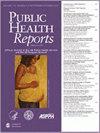Assessment of the Standardized Surveillance Case Definition for Neonatal Abstinence Syndrome by the Council of State and Territorial Epidemiologists, 4 Jurisdictions, 2020-2021
IF 3
4区 医学
Q2 PUBLIC, ENVIRONMENTAL & OCCUPATIONAL HEALTH
引用次数: 0
Abstract
Objectives:In 2019, the Council of State and Territorial Epidemiologists ratified a multitiered standardized surveillance case definition (SSCD) for neonatal abstinence syndrome (NAS) to minimize variability in definitions across states. This evaluation of the tier 1 NAS SSCD aimed to identify common challenges and opportunities for enhancement to support consistent implementation of the definition.Methods:This mixed-methods analysis consisted of 3 virtual focus groups in March 2021 with site principal investigators, medical record abstractors, and data analysts (1 focus group each) from 4 jurisdictions piloting the tier 1 NAS SSCD. We analyzed focus group transcripts to create a codebook. We collected written reports in February 2022 from the 4 jurisdictions, conducted thematic analysis of focus group transcripts and written reports to identify themes, and collected surveillance data on infants identified with NAS born from January 2020 through December 2021 from the pilot sites. We analyzed surveillance data to further inform identified themes. We examined agreement among tier 1 classifications assigned independently by each pilot site and the Centers for Disease Control and Prevention to cases of NAS.Results:Three major themes emerged in the data: challenges abstracting data on withdrawal signs from the medical record, difficulty determining the time frame of prenatal substance exposure, and challenges assigning case classifications. In a comparison of tier 1 classifications assigned by the Centers for Disease Control and Prevention and the sites, 82.1% of cases in the dataset were concordant.Conclusions:We identified several opportunities to modify the SSCD to promote consistency and ease implementation across jurisdictions. Promoting consistent implementation supports comparability of NAS incidence estimates across jurisdictions, evaluation of prevention efforts, and allocation of resources to support families.2020-2021 年州和地区流行病学家理事会对新生儿酗酒综合症标准化监测病例定义的评估,4 个司法管辖区
目标:2019 年,各州和地区流行病学家委员会批准了新生儿禁欲综合征(NAS)的多层标准化监测病例定义(SSCD),以尽量减少各州定义的差异。方法:这项混合方法分析包括 2021 年 3 月的 3 个虚拟焦点小组,参加者包括来自 4 个试行一级 NAS SSCD 的辖区的现场首席调查员、病历摘要员和数据分析师(各 1 个焦点小组)。我们对焦点小组的记录进行了分析,以创建一个代码集。我们于 2022 年 2 月从 4 个辖区收集了书面报告,对焦点小组记录和书面报告进行了专题分析,以确定主题,并从试点地点收集了 2020 年 1 月至 2021 年 12 月期间出生的已确认患有 NAS 的婴儿的监控数据。我们对监控数据进行了分析,以进一步了解确定的主题。结果:数据中出现了三大主题:从病历中抽取戒断征兆数据面临挑战、难以确定产前药物接触的时间范围以及病例分类的分配面临挑战。结论:我们发现了一些修改 SSCD 的机会,以促进一致性并简化各辖区的实施。促进一致性实施有助于提高各辖区 NAS 发病率估算的可比性、评估预防工作以及分配资源以支持家庭。
本文章由计算机程序翻译,如有差异,请以英文原文为准。
求助全文
约1分钟内获得全文
求助全文
来源期刊

Public Health Reports
医学-公共卫生、环境卫生与职业卫生
CiteScore
5.00
自引率
6.10%
发文量
164
审稿时长
6-12 weeks
期刊介绍:
Public Health Reports is the official journal of the Office of the U.S. Surgeon General and the U.S. Public Health Service and has been published since 1878. It is published bimonthly, plus supplement issues, through an official agreement with the Association of Schools and Programs of Public Health. The journal is peer-reviewed and publishes original research and commentaries in the areas of public health practice and methodology, original research, public health law, and public health schools and teaching. Issues contain regular commentaries by the U.S. Surgeon General and executives of the U.S. Department of Health and Human Services and the Office of the Assistant Secretary of Health.
The journal focuses upon such topics as tobacco control, teenage violence, occupational disease and injury, immunization, drug policy, lead screening, health disparities, and many other key and emerging public health issues. In addition to the six regular issues, PHR produces supplemental issues approximately 2-5 times per year which focus on specific topics that are of particular interest to our readership. The journal''s contributors are on the front line of public health and they present their work in a readable and accessible format.
 求助内容:
求助内容: 应助结果提醒方式:
应助结果提醒方式:


